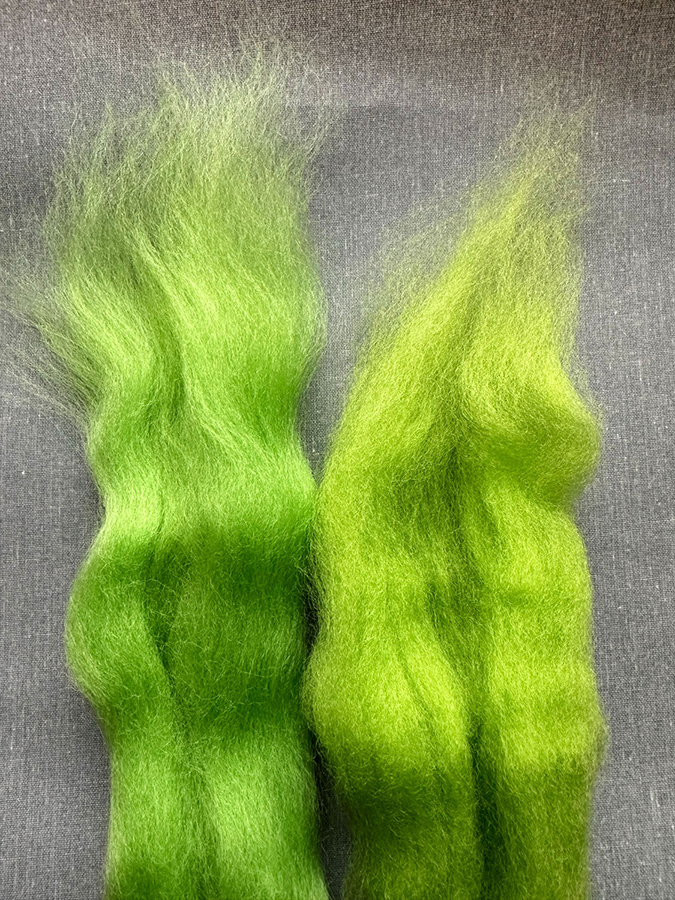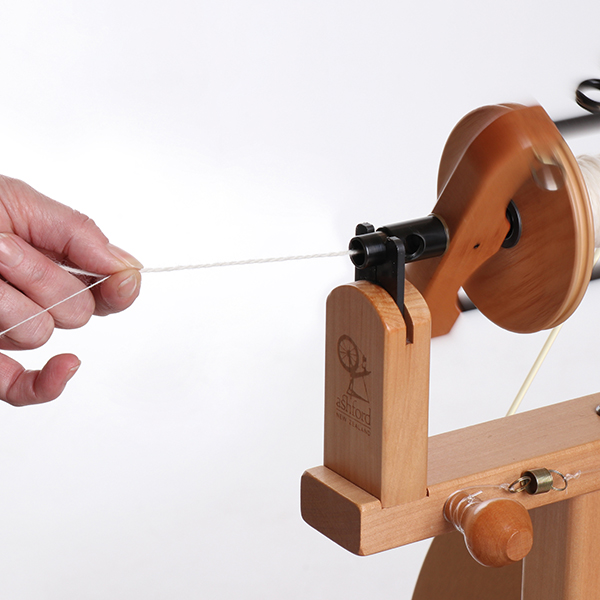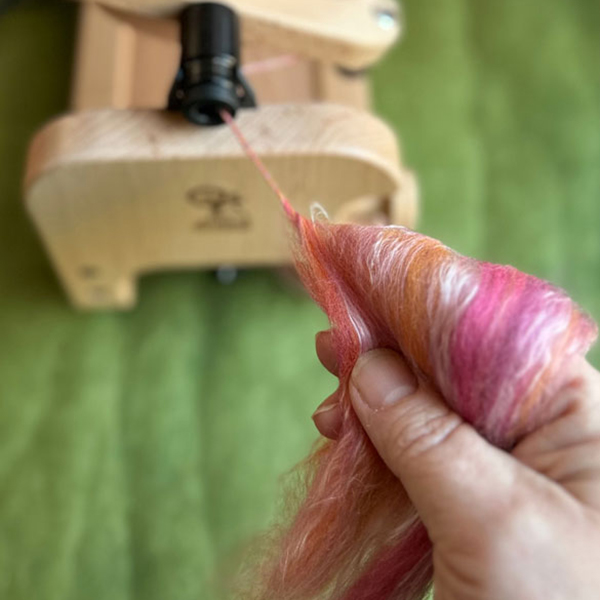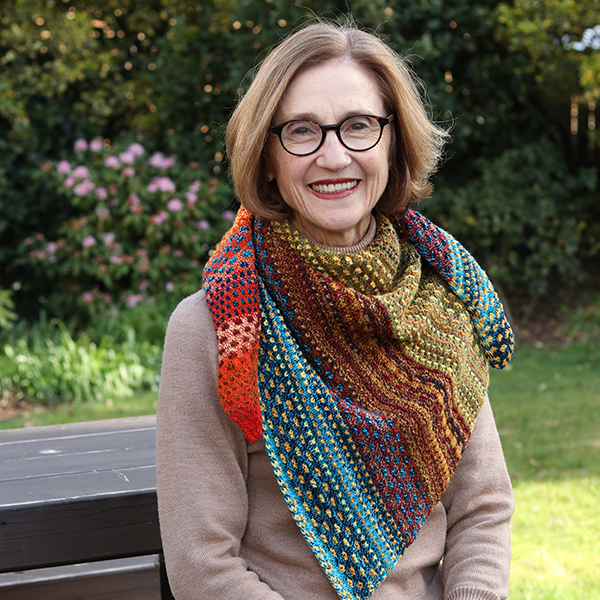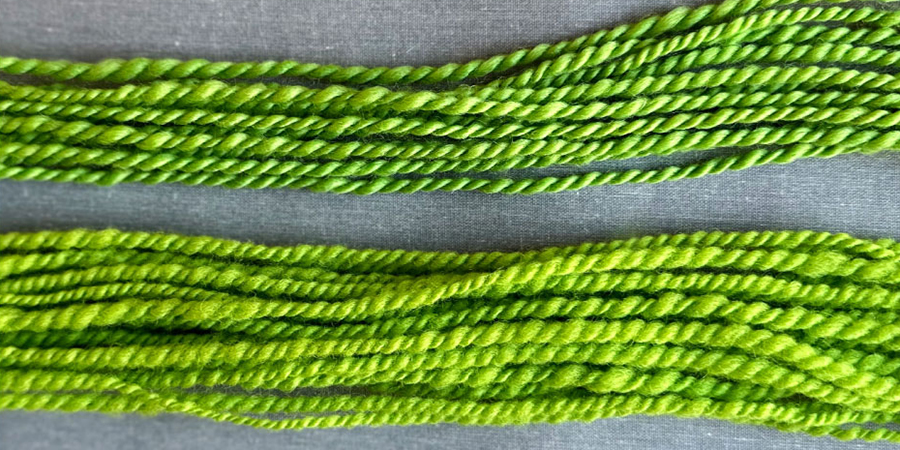
Spinning Woolen and Worsted – by Jillian Moreno
Another great article from Jillian Moreno. In this blog post Jillian shares with us a technique for spinning woolen and worsted yarn.
Click here to read her previous article Spinning Vertical Colour. Jillian is the author of Yarnitecture: A Knitter’s Guide to Spinning: Building Exactly the Yarn You Want. You can visit Jillian’s website here www.jillianmoreno.com/ or follow her on Instagram @jillianmoreno
I hope you enjoy these spinning tips from Jillian.
Happy spinning!

Kate
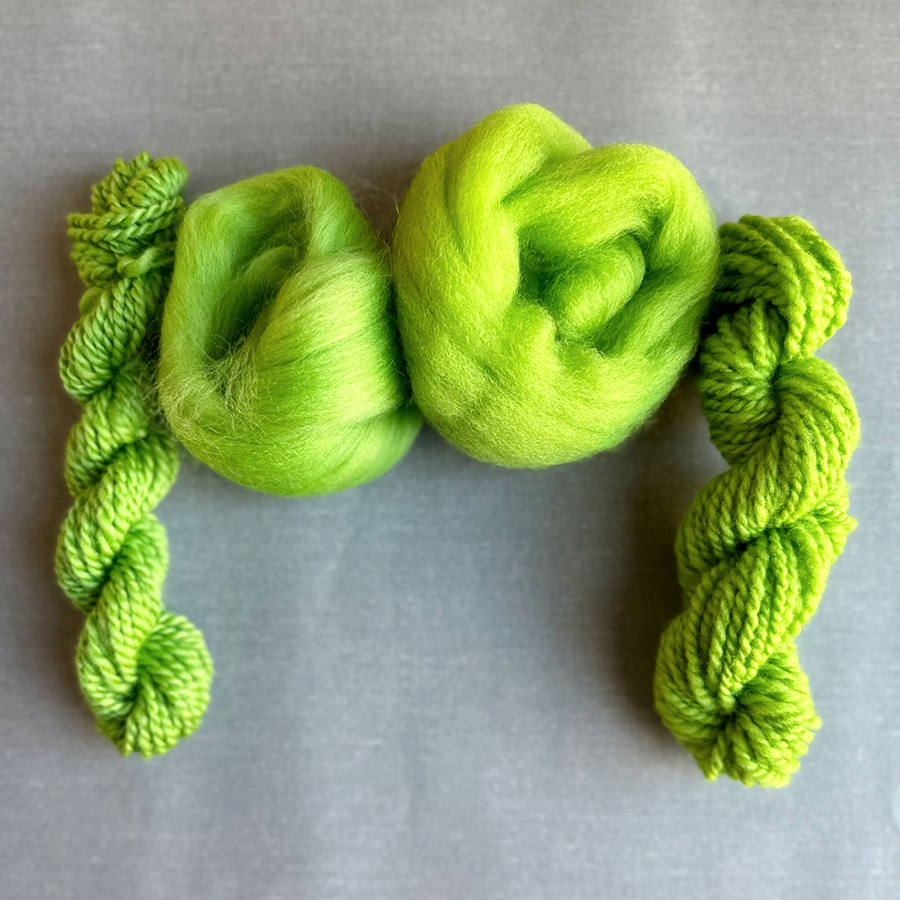
Spinning Woolen and Worsted – by Jillian Moreno
I get a lot of questions about woolen and worsted, especially when it comes to drafting. What are woolen and worsted in spinning?
Woolen and worsted in spinning are a style of preparation, a style of drafting, a type of yarn, and worsted is also a size of yarn. The photo shows a worsted yarn and a worsted fiber prep (combed top) on the left and a woolen yarn and a woolen fiber prep (sliver) on the right.
A woolen or worsted yarn is a yarn where the preparation and the drafting style are both the same. Your prep and draft don’t have to match, but that makes a yarn that has properties of both styles, some spinners call these ‘semi’ yarns. To me the semi discussion is confusing. When I spin a mixed style yarn I just describe what I’m doing, its much clearer, ‘I’m spinning a worsted prep with a woolen draft’ instead of ‘I’m spinning semi-worsted’.
Why choose one yarn over the other? Of course, the big answer is, it depends what type of yarn you want.
You can see in the photo below how different they look, the worsted spun yarn is on the left and the woolen spun yarn is on the right. Even without touching them I can tell they will make very different knitted fabric.
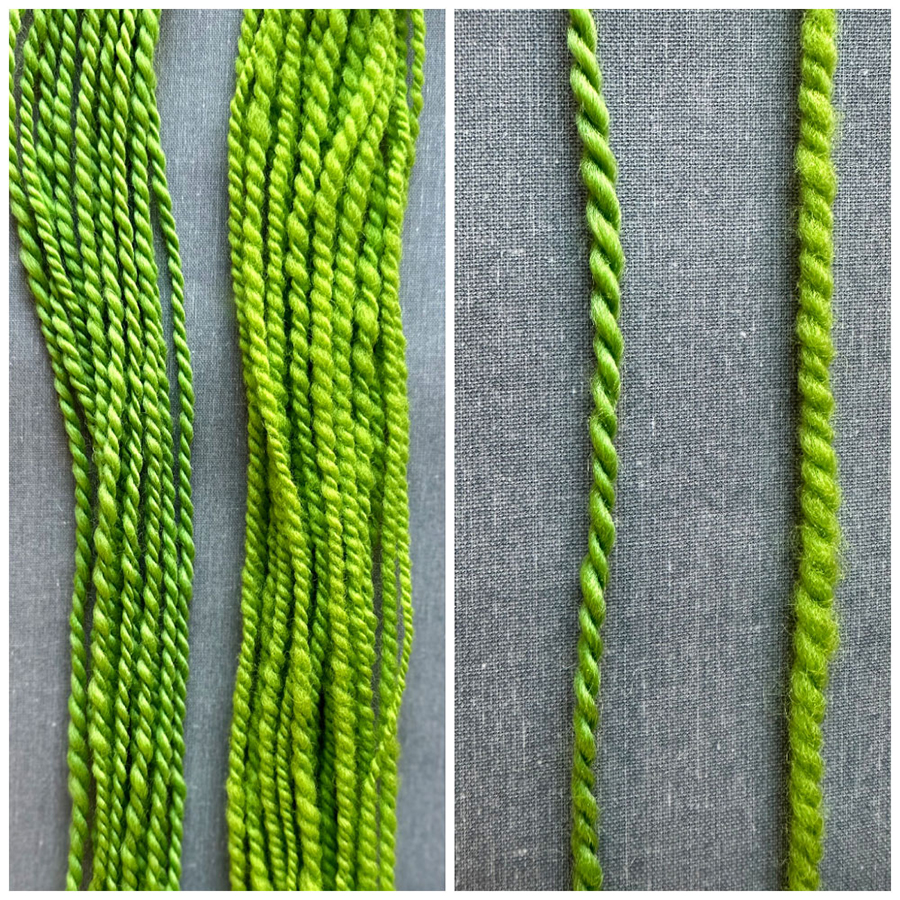
The characteristics of a worsted yarn are:
• Smooth
• Good stitch definition
• Crisp colorwork, good for intarsia or Norwegian-style knitting
• Strong
• Stands up to abrasion, less pilling
• Less air, not as warm
• Dense
• Good drape
• Shiny, depending on breed or blend
The characteristics of a woolen yarn are:
• Fuzzy
• Less defined stitches
• Soft colorwork, good for Lopi and Fair Isle knitting
• Very airy and warm
• Lofty
• Less drapey
• Less shiny
Woolen and worsted preparation have the same characteristics. I can see a big difference in combed top [left] and carded sliver [right]. Combed fibers are dense and smooth, with shorter fibers, a lot of air, and any extra bits, like hay combed out. Woolen preparations are carded with many different fiber lengths, and air, jumbled together going in different directions. There are many more woolen preparations than worsted, batts, rolags, punis, carded roving are all woolen. Sliver is a woolen preparation where the carded fibers are lined up, it has direction like combed top, but has different lengths of fiber and air carded in.
When we talk about worsted and woolen drafting, we talking about how the twist gets into the fiber to make yarn. You’ll hear worsted drafting sometimes called short forward draft, and woolen drafting called longdraw, but those aren’t the only ways to draft worsted or woolen.
I think about it in terms of where is the twist, and how will it get into my fiber?
If I draft worsted, I have no twist between my front and back hands and I bring the twist to the fiber smoothing as I go. I can draft worsted either forward or backwards.
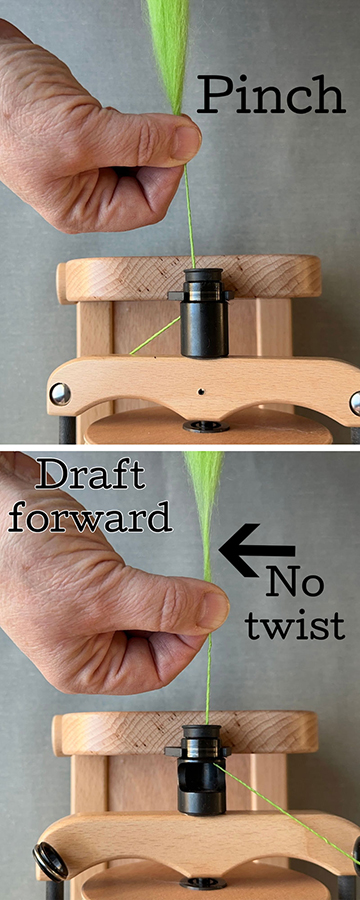
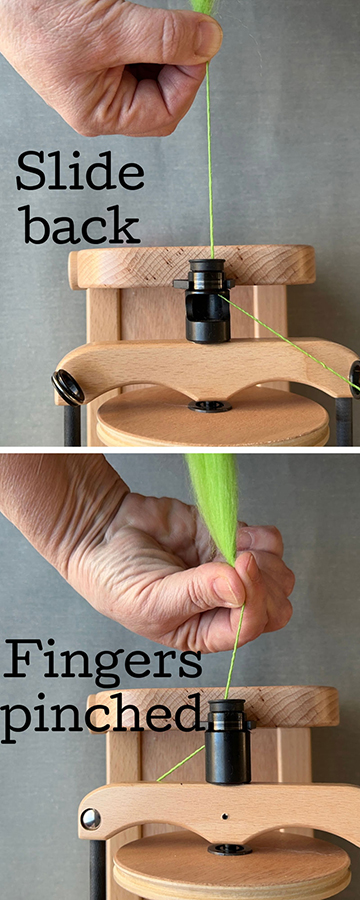
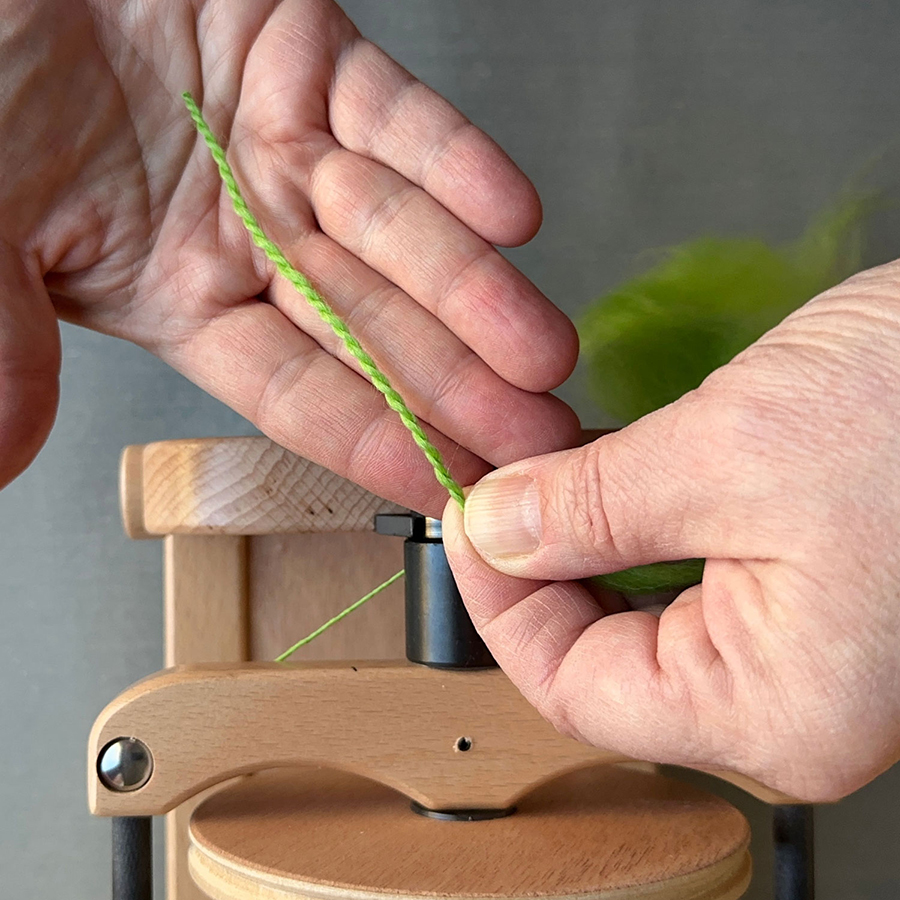
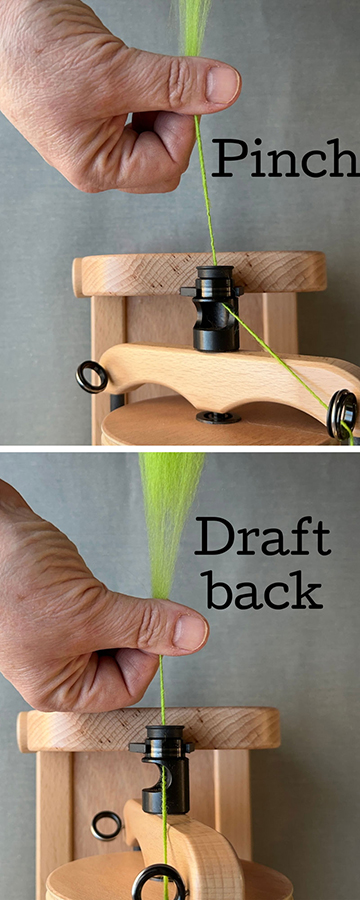
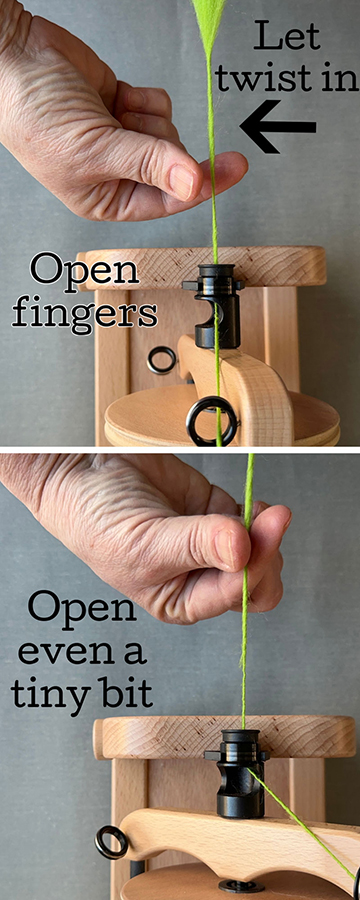

If you are newer to spinning woolen, I would advise slowing down a little from your usual drafting speed. I’ve had lots of students when they move from worsted to woolen drafting use a lot of twist. If you use too much twist the twist gets deeper into your fiber and it won’t want to draft. Turn down your twist and spend time discovering just how much twist your woolen yarn needs.
I finish my woolen and worsted yarns differently to help preserve the qualities in the yarns. I wet finish all of my yarns, soak them in warm water and wool wash, then roll them in a towel to get most of the water out.
For worsted yarns I do a snap finish, putting my hands inside the skein and drawing them apart quickly, snapping the yarn. I work my way around the skein snapping. This helps to set the ply, but keeps the surface of the yarn smooth.
For woolen yarns I do a whacking finish. Working my way around the skein I whack the yarn on my kitchen counter. This helps to set the ply, strengthens the durability of the woolen yarn by allowing the fibers to draw in a bit, and it encourages both loft and fuzziness in a yarn.
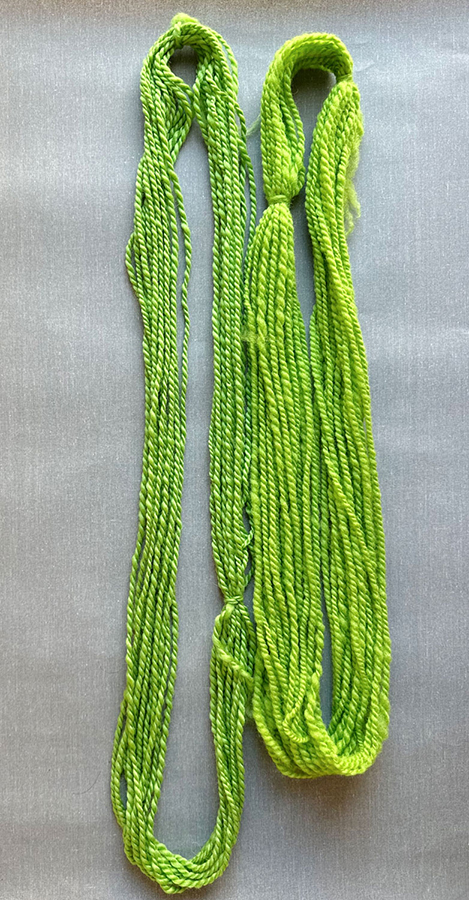
The two yarns in the photo were the same wpi before I finished them, and were wound off on the same niddy noddy. After finishing, the worsted yarn [left] is smooth and drapey, and the woolen yarn is lofty and fuzzy. The woolen yarn has bloomed and really puffed up, it is now a larger wpi, and shorter in yardage.
BIO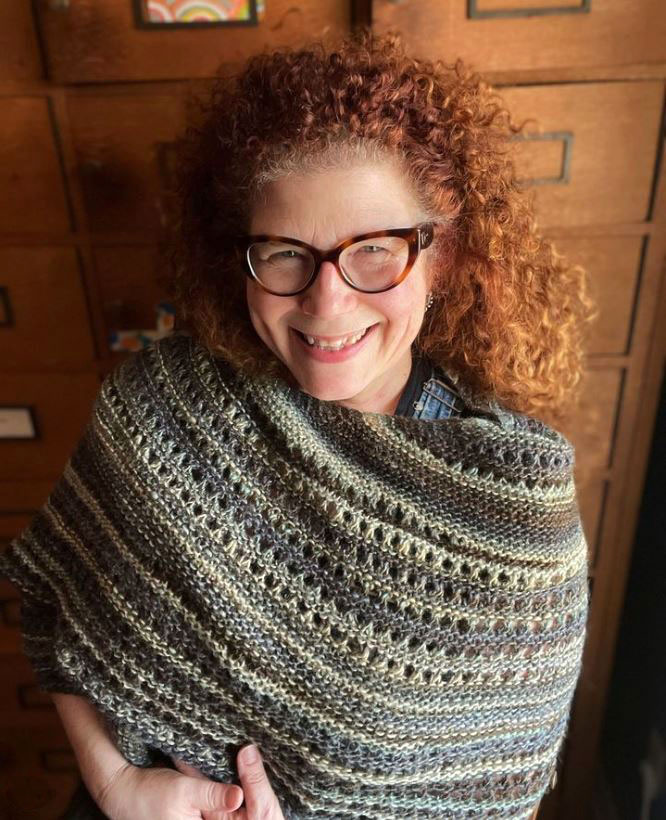 Jillian Moreno is the author of the best-selling book Yarnitecture: A Knitter’s Guide to Spinning: Building Exactly the Yarn You Want.
Jillian Moreno is the author of the best-selling book Yarnitecture: A Knitter’s Guide to Spinning: Building Exactly the Yarn You Want.
She is passionate about investigating the structure of yarn and color, and using them in intentional ways in knitting, stitching and weaving. She explores, questions and plays with fiber and wants to take as many people as possible along for the ride.
She believes all yarn is beautiful and useful and enthusiastically encourages her students to feel joy making and using their handspun.
Jillian believes in making yarn you like and want to use, she throws ‘must’ and ‘should’ out the window, though does enjoy the fun that comes from answering a question with ‘it depends’.
Combining technical and intuitive approaches to spinning, her students gain confidence as well as solid skills to build any yarn they can dream of. In her classes and writing Jillian shows there is never only one way to make a yarn. Knowing and seeing the outcomes of a variety of spinning skills frees spinners to build unique and useful yarns to use with any project they have in mind.
Jillian’s students play and experiment with fibers and color, gain an enthusiasm for sampling, and come to see that their own definition of beautiful, consistent or perfect yarn is the only one that matters.

